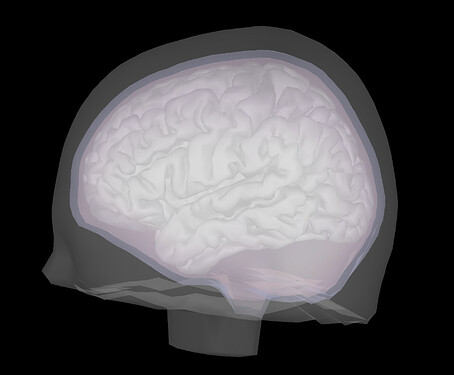Dear Brainstorm community,
I tried computing the head model using the default anatomy of the ICBM152 template, but I am running into the following error. I follow the steps outline here for CAT12 segmentation prior to computing the head model:
This issue seems to be new, as I was able to follow the same steps I am doing now with success last week. I did go back to using the ICBM152 template (without CAT12 segmentation), and OpenMEEG worked. Since it worked before with CAT12 segmentation, should I just follow the instructions provided at the end of the error and increase the number of vertices? Thank you.
** Error: OpenMEEG call: om_assemble -HM
** "/Users/prabhjotdhami/.brainstorm/tmp/openmeeg.geom"
** "/Users/prabhjotdhami/.brainstorm/tmp/openmeeg.cond"
** "/Users/prabhjotdhami/.brainstorm/tmp/openmeeg_hm.mat"
** OpenMEEG error #1:
** ./om_assemble version 2.4.1 compiled at Aug 29 2018 08:19:07
**
** | ------ ./om_assemble
** | -HM
** | /Users/prabhjotdhami/.brainstorm/tmp/openmeeg.geom
** | /Users/prabhjotdhami/.brainstorm/tmp/openmeeg.cond
** | /Users/prabhjotdhami/.brainstorm/tmp/openmeeg_hm.mat
** | -----------------------
** (DEPRECATED) Please consider updating your geometry file to the new format 1.1 (see data/README.rst): /Users/prabhjotdhami/.brainstorm/tmp/openmeeg.geom
** This geometry is a NESTED geometry.
** Info:: Mesh name/ID : 1
** # vertices : 1922
** # triangles : 3840
** Euler characteristic : 2
** Min Area : 9.70682e-06
** Max Area : 9.09576e-05
** Info:: Mesh name/ID : 2
** # vertices : 1922
** # triangles : 3840
** Euler characteristic : 2
** Min Area : 8.7222e-06
** Max Area : 8.55674e-05
** Info:: Mesh name/ID : 3
** # vertices : 1922
** # triangles : 3840
** Euler characteristic : 2
** Min Area : 1.45854e-05
** Max Area : 0.000148821
** Info:: Domain name : Scalp
** Conductivity : 1
** Composed by interfaces : +1 -3
** Interface "1"= { mesh "1" }
** Interface "3"= { mesh "3"(outermost) }
** Info:: Domain name : Skull
** Conductivity : 0.0125
** Composed by interfaces : +2 -1
** Interface "2"= { mesh "2" }
** Interface "1"= { mesh "1" }
** Info:: Domain name : Brain
** Conductivity : 1
** Composed by interfaces : -2
** Interface "2"= { mesh "2" }
** Info:: Domain name : Air
** Conductivity : 0
** Composed by interfaces : +3
** Considered as the outermost domain.
** Interface "3"= { mesh "3"(outermost) }
** !!!!!!!!!!!!!!!!!!!!!!!!!!!!!!!
** !!!!!!!!!!! WARNING !!!!!!!!!!!
** !!!!!!!!!!!!!!!!!!!!!!!!!!!!!!!
** 2 meshes are intersecting !
** Info:: Mesh name/ID : 1
** # vertices : 1922
** # triangles : 3840
** Euler characteristic : 2
** Min Area : 9.70682e-06
** Max Area : 9.09576e-05
** Info:: Mesh name/ID : 3
** # vertices : 1922
** # triangles : 3840
** Euler characteristic : 2
** Min Area : 1.45854e-05
** Max Area : 0.000148821
**
** For help with OpenMEEG errors, please refer to the online tutorial:
** https://neuroimage.usc.edu/brainstorm/Tutorials/TutBem#Errors
